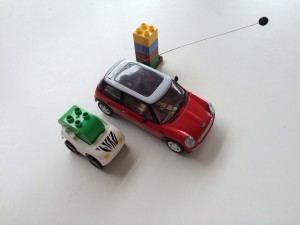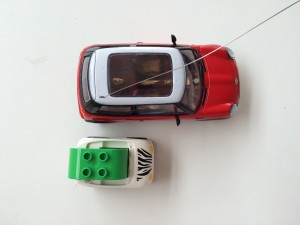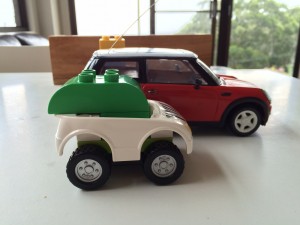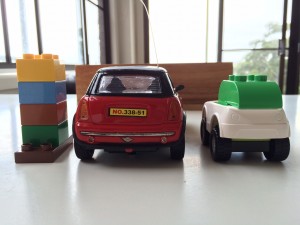In this piece I drill deeper into speculating what the Apple Car may be like, contemplating its likely specifications and performance characteristics, based upon existing cars.
Following on from my piece that sought to describe the physical parameters of the Apple Car, in this piece I go one step further (too far?) and attempt to apply performance characteristics to the Apple Car. Using specifications from existing and upcoming micro-cars (REFERENCE LINK), I attempt to extrapolate the likely possible specifications for a future ‘disruptive’ micro-car[1], scheduled for 2019-21 release.[2] The existing micro-cars that I referred to, and their specifications can be found on the next blog post here.
For the purposes of our exercise, we anticipate that the future ‘disruptive’ vehicle will have the following characteristics:
Passengers: 1 adult (with some type of convoying technology required to link other cars of the same type, either ‘in-line’ or side-by-side.) In Australia research suggests that over 90% of trips only carry the driver.[3] But note, that percentage would count a trip to drop off the kids at school as 2 trips, with one of those trips, the return trip, likely to be only 1 passenger.]
Dimensions: Not much bigger than an electric wheelchair – perhaps slightly longer and wider for safety reasons and cargo capacity i.e. Length: Approx 1.5 to 1.6m; Width: Approx 1m: Height, Approx 1.35 to 1.6m (similar to a Mini, 1.4m, or ‘Smart Fortwo’, 1.56m)
Weight: Less than one quarter the weight of a conventional family sedan, or 300-450kg; Less is more due, to the weight of batteries. I anticipate it to use super-strong lightweight materials like carbon-fibre, perhaps custom-made for the ‘Apple Car’ similar to Gorilla Glass or the gold alloy used in the Apple Watch. Note, the Morgan EV3 is said to be less than 500kg and will be larger than this vehicle. I therefore anticipate it should be capable of reaching 2/3rds to 80% of its weight. However, it is also likely to have more ‘mod cons’ than the Morgan EV3 (e.g. a ‘hardtop’ roof; air conditioning; entertainment system; ‘smart’ technologies/sensors etc, which might take the weight from say, 400kg to 500kg.)
Engine: 30kW to 55kW (I anticipate it to be similar to the electric Smart Fortwo, or slightly less to give it similar performance but with lower weight.) Weight calculation: [Est. 400kg + 100kg (large male) = ] 500kg vs [880kg +100kg (large male)] = 980kg. Consequently, I anticipate a 30kW engine could have the same performance specifications as the electric Smart Fortwo. Elsewhere I suggest that those performance characteristics are all that are needed.
Battery capacity: Approximately the same as for the Smart Fortwo i.e. 17.6 kW·h lithium-ion battery by Deutsche ACCUmotive[44]
Range: Approximately 200-300km. This should account for more than 95% of trips.[4] 145 km (90 mi) range is available from the electric Smart Fortwo. Note, the range could be much higher considering the anticipated reduced weight of the proposed Apple Car. Consequently, it may be possible to have a smaller battery, reducing weight considerably. I think the weight/battery/performance/range equation will be a very well optimized balance.
Top Speed: Not capable of doing much more than maximum speed limit in most Western Countries’ i.e. 125 km/h (78 mph). This is the top speed of the electric Smart Fortwo. This speed was chosen because Apple has a strong tradition of not competing in ‘specification wars’, eschewing adding specifications for the sake of them, and instead aiming for qualitative benchmarks. For example, its iPod was not the smallest music player, nor the music player with necessarily the largest memory. Instead it went for ease-of-use. Likewise, the Apple Car will not be built for the purposes of drag-racing conventional motor cars. It just needs to get the passenger/driver from A to B.
Price: Comfortably below multi-passenger micro-cars, with multiple Apple Cars being about the same as a mid-luxury family sedan (e.g. Honda Accord) i.e. Sub US$13,000. Preferably under US$7-10K. Note, because it’s only a single passenger vehicle it may need to be substantially cheaper than most of the two seaters to provide a convincing ‘value proposition’. This is also why the ‘convoying’/platooning capability described in the earlier article is so important. There may also be economic pressures for this vehicle to be a subscription vehicle or some other business model of usage/ownership. (See other article on ‘Thinking behind Apple Car speculation’). Most micro-cars are sub US$15,000. It may be possible to achieve price ranges below US$10K with sufficient economies of scale e.g. Dediu’s suggested ‘1 million car’ mark for an Apple Car to be ‘meaningful’.
Smart Technologies: Pontooning/convoying’ technology will be important to allow for the Apple Car to disrupt the family car. An example of this concept is given for the EO Smart Connecting Car 2.
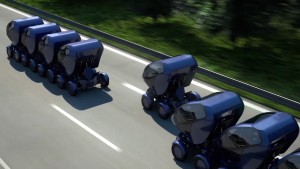
[1] Due to the highly speculative nature of this article, I am attempting to cover my bases here. Perhaps if Apple doesn’t make this, someone else will???
[2] According to the Wall Street Journal (WSJ) the Apple Car is scheduled to be released in 2019. Dediu notes this usually means the product would be available to the public one year later (2020) at the earliest. More recently, Tim Cook, when asked about the Apple Car did not deny the rumour, but instead implied it was a lot further away than people were expecting, saying: ““Do you remember when you were a kid, and Christmas Eve, it was so exciting, you weren’t sure what was going to be downstairs? Well, it’s going to be Christmas Eve for a while.” Source: http://www.businessinsider.com.au/tim-cook-on-apple-car-its-going-to-be-christmas-eve-for-a-while-2016-2?r=US&IR=T
[3] http://chartingtransport.com/tag/car-occupancy/
[4] http://spectrum.ieee.org/cars-that-think/transportation/efficiency/stop-worrying-your-electric-car-will-have-plenty-of-range and http://jalopnik.com/the-chevrolet-bolt-will-be-a-200-mile-electric-tesla-fi-1678649485



